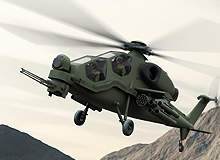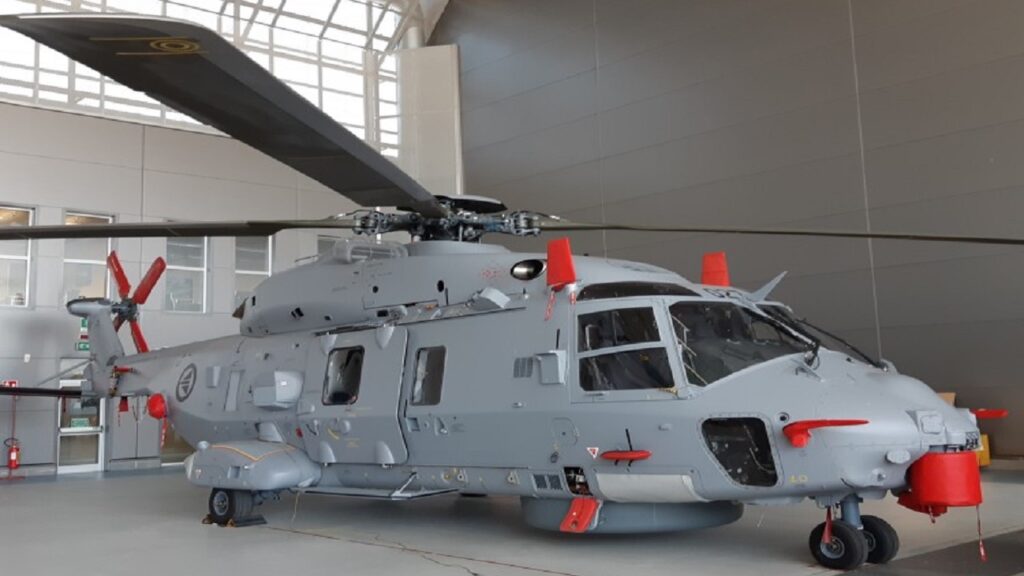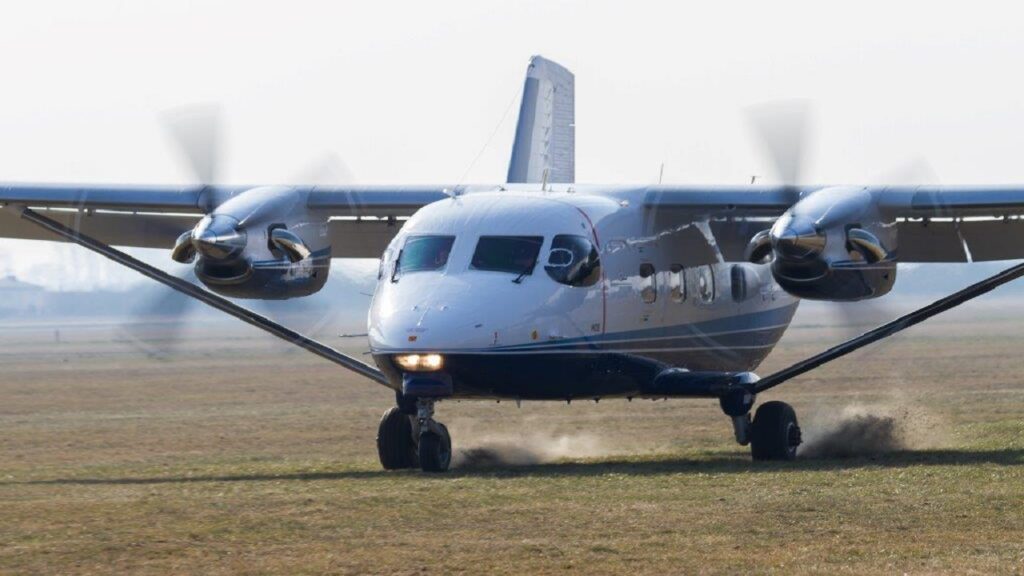
The T129 is a twin-engine multi-role attack helicopter designed and manufactured jointly by Turkish Aerospace Industries (TAI) and Italy-based AgustaWestland to meet the requirements of Turkish Armed Forces. It is built based on its predecessor A129 Mangusta platform.
A prototype of the helicopter crashed on 19 March 2010 while executing hover tests. The crash occurred due to loss of power in its tail rotor while flying at an altitude of 1,500ft (457m) near Verbania in northern Italy.
T129 attack helicopter design
The T129 can execute a range of missions, including combat, armed reconnaissance, armed escort, deep strike, fire support, precision strike, security and suppression of enemy air defences. It can operate in both day and night operations in adverse weather conditions.
The aircraft is fitted with a five-bladed, 11.9m-diameter main rotor, a two-bladed tail rotor, wheeled landing gear, a laser designator, a laser spot tracker, a colour television camera, a multiple target tracking and emergency locator-transmitter.
Development of the A129 to T129
The Turkish Armed Forces awarded a $3bn contract to TAI in March 2007 to buy 51 (plus 40 optional) A129 Mangusta helicopters from AgustaWestland.
TAI modifies and assembles the A129 in Turkey to produce the T129 helicopter.
TUBITAK (Turkish State Research Organization), METEKSAN Savunma Sanayii and Bilkent University formed a joint venture in July 2007 to build a modern millimetre wave radar for the T129. The final agreement was signed in September 2007.
The development of the T129 began in July 2008 under the ATAK helicopter programme. The maiden flight of the T129 prototype P1 took place on 28 September 2009 at AgustaWestland’s facilities in Vergiate, Italy.
One out of the 51 helicopters built by TAI was retained by the Turkish Ministry of Defence for testing and future development. The remaining helicopters are being delivered to Turkey in two different configurations TUC-1 (30) and TUC-2 (20).
The Turkish Armed Forces received the first T129 ATAK from TAI in May 2014. TAI concluded the delivery of the first fleet of nine T129 ATAK helicopters in July 2015.
T129 countermeasures
The TUC-1 is fitted with native electronic warfare and countermeasures, Aselsan Asel FLIR-300, and foreign missiles. The TUC-2 is additionally fitted with Roketsan UMTAS missiles, and Roketsan Cirit Laser guided 2.75in rockets.
The helicopter can survive in the battlefield through the integration of survivability equipment, which includes countermeasure dispensing systems, a missile warning system, a laser warning system, a radio frequency jammer, a radar warning receiver (RWR), infra-red countermeasures, and a suite central processing system (SCPS).
Cockpit
The T129 features a digital cockpit, which accommodates two crew members.
The cockpit has two colour multifunctional displays (MFD), a keyboard display unit, and a night-vision helmet mounted display system (HMDS).
A flight data recorder (FDR), mission planning ground station (MPGS), weapon control units (WCU), integrated standby instrument systems, and an air vehicle monitoring system (AVMS) are also installed in the aircraft.
Avionics
The T-129 is equipped with an advanced avionics suite, which includes a dual avionics central control computer (ACCC), an automatic flight control system (AFCS), an air data computer (ADC), an inertial navigation system (INS), a global positioning system (GPS) and a digital moving map (DMP).
It is also fitted with a voice encryption system, a data and image transmission system (DITS), and a DAS suite with passive and active countermeasures.
Aselsan was chosen by the Undersecretariat for Defence Industries (SSM) of Turkey in April 2010 to design and build the Helmet Integrated Cueing System (HICS) along with the electronic unit and software for the T129.
Armaments
The helicopter is armed with four hard-points which can accommodate 1,200kg (300kg each) of payload. It is fitted with a 20mm three-barrel Gatling-type cannon which can fire 500 rounds.
The aircraft also has 12.7mm gun pods, anti-tank guided missiles (ATGM) and air-to-air missiles (AAM), 70mm rockets and guided rockets.
Engines
The T129 is powered by two LHTEC T800-4A turboshaft engines. Each engine can produce 1,014kW of output power. The T800-4A is an export version of the CTS800 engine.
A full authority digital engine control system reduces the work load of the pilot by executing autopilot operations.
The engine has a length and diameter of 0.85m and 0.56m respectively and weighs 154kg.
Performance
The T129 can climb at a rate of 14m/s. Its maximum cruise speed is 269km/h. The normal and ferry range of the helicopter are 561km and 1,000km, respectively.
The service ceiling of the helicopter is 6,096m. Its maximum endurance is three hours.




